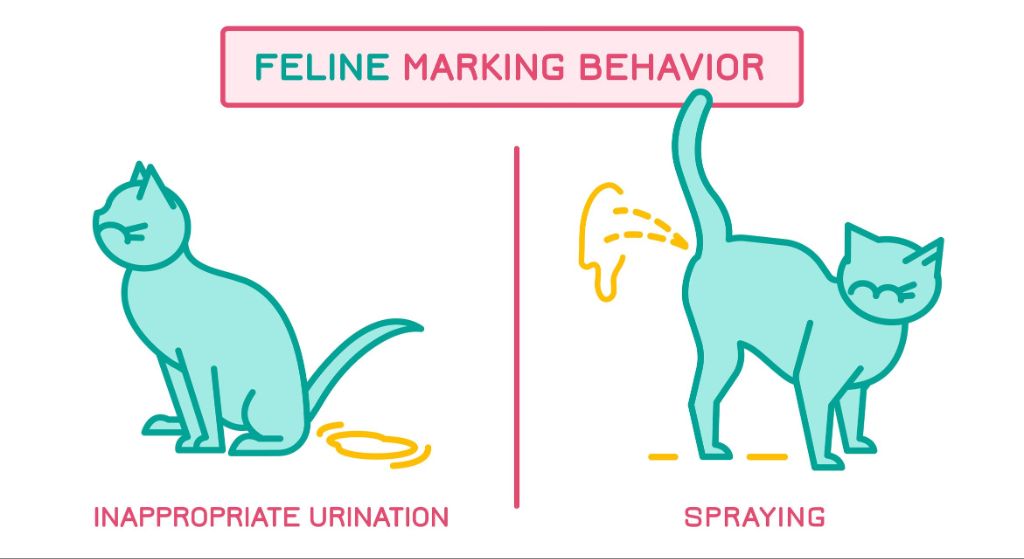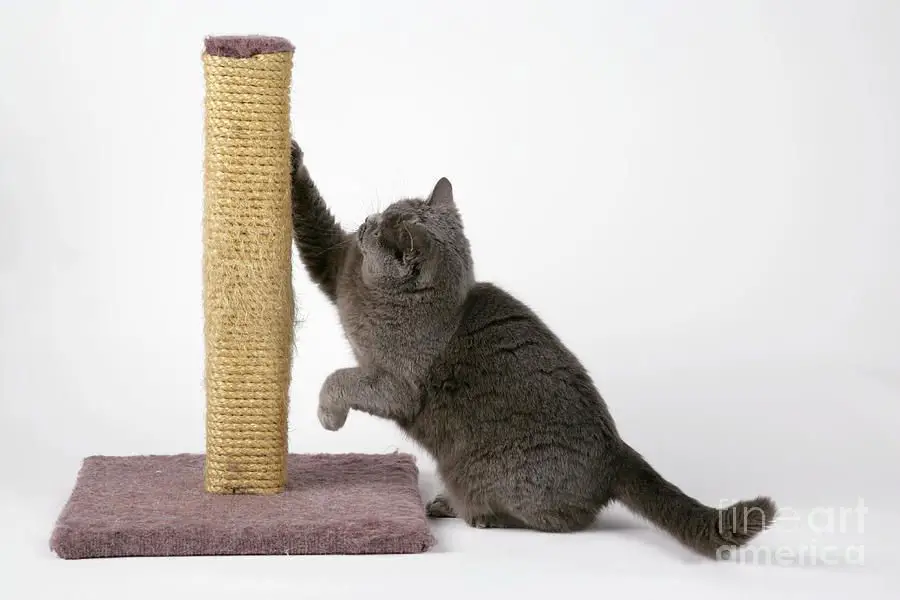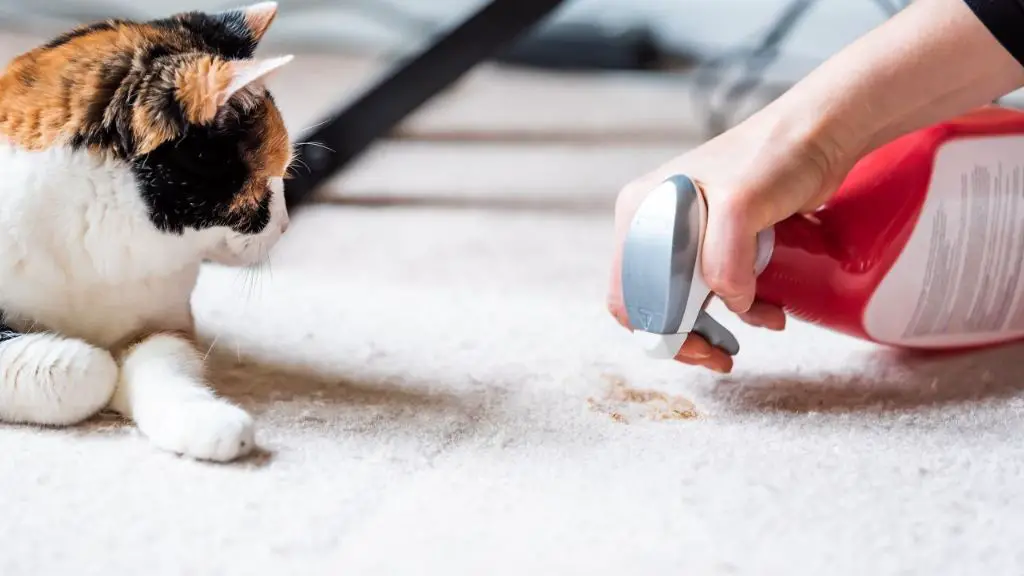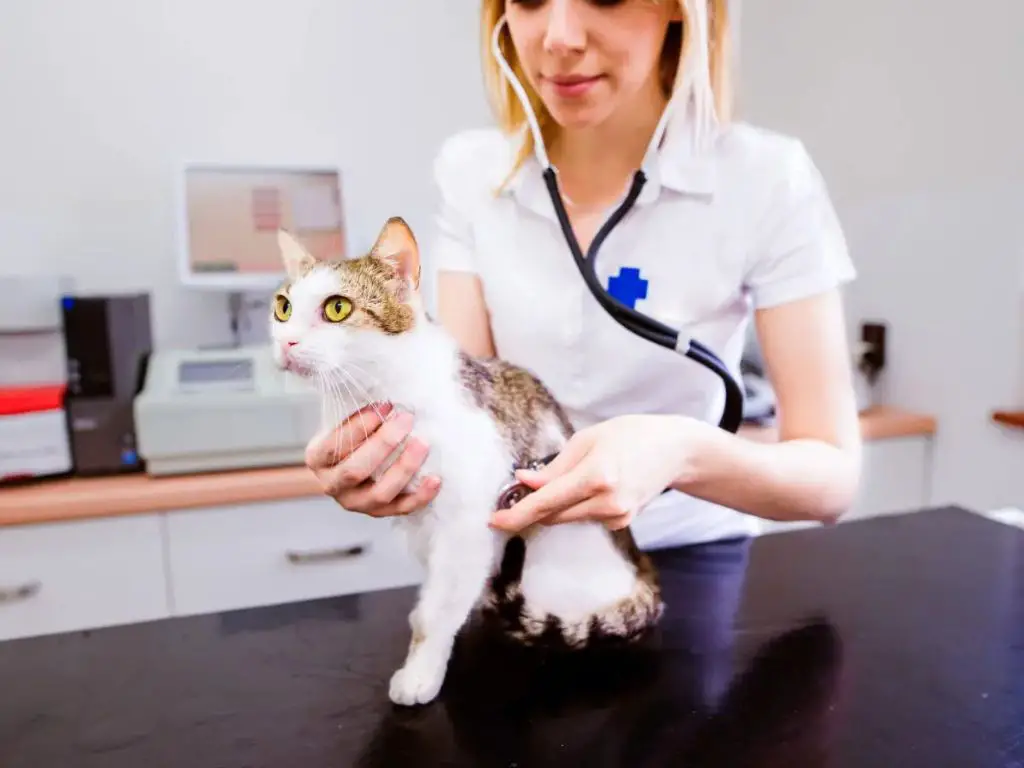Cat spraying, also known as urine marking, refers to when cats spray urine onto vertical surfaces. It is a normal feline communication behavior but can become problematic in multi-cat households like a breeder’s cattery. Unneutered males and unspayed females are more likely to spray urine, especially when competing for territory or mates. Spraying can lead to undesirable smells and stains, stress between cats, and difficulties maintaining a hygienic breeding environment. It can also deter potential adopters and affect the reputation of a cattery or breeding program. Understanding the causes of spraying and implementing prevention methods are key for cat breeders dealing with this common issue.
Understanding the Causes of Spraying
Spraying, or urine marking, in cats can be caused by various medical issues. According to WebMD, “Medical issues such as kidney problems and arthritis can cause your cat to urinate in the wrong place.” [https://www.webmd.com/pets/cats/cat-spraying] Lower urinary tract disease and medical conditions that cause pain or discomfort when urinating are common medical reasons for inappropriate urination and spraying.

For example, cats with feline idiopathic cystitis or bladder inflammation suffer discomfort when urinating. As a result, they may spray or urinate outside the litterbox to avoid the pain associated with it. Other common medical causes include urinary tract infections, kidney or liver disease, diabetes, and hyperthyroidism. In many cases, older cats can develop arthritis or other mobility issues that make it painful to enter the litter box. Treating the underlying medical condition often resolves the spraying behavior.
In addition to physical exams, lab tests like urinalysis, bloodwork, and imaging can help identify medical factors contributing to spraying. Diagnosing and addressing medical problems through diet changes, medications, supplements, or therapy is key to controlling spraying caused by illness or discomfort.
Behavioral Causes of Spraying
Territorial marking is one of the most common behavioral causes of spraying in cats. Even neutered cats may spray urine as a way to mark their territory and feel more secure in their environment. Changes to the home environment, new pets, furniture rearrangement, or introducing new people can cause anxiety and lead cats to begin spraying as a territorial behavior. Cats that are anxious, stressed, or feel their territory is threatened are more likely to exhibit spraying and marking behaviors (VCA Hospitals).
Stress and anxiety can also lead to spraying behaviors in cats. Events that cause stress like changes to their routine, travel, loud noises, or introduction of new pets can cause a cat to spray urine even if they are fixed. Cats that are anxious or fearful may spray urine around entrances and exits to their territory as a way to feel more secure and less stressed. Managing stress levels in the home and providing environmental enrichment can help reduce anxiety-related spraying (CatFriendly).
Prevention Methods
There are several ways cat breeders can help prevent spraying behavior in their cats. The most important prevention method is spaying/neutering cats at an appropriate age. According to the ASPCA, spaying/neutering “can stop urine spraying and may stop other types of territorial marking common in unaltered cats” (https://www.aspca.org/pet-care/general-pet-care/spayneuter-your-pet). While breeders cannot alter pet cats meant for breeding, they should plan to spay/neuter cats once they retire from the breeding program. This can help curb spraying behaviors later in life.

Another preventative method is providing cats with proper environmental enrichment. The Spruce Pets recommends providing scratching posts, cat trees/perches, puzzle toys, and play time to give cats “positive ways to expend their energy” (https://www.thesprucepets.com/how-to-stop-a-cat-from-spraying-6890188). Keeping cats’ environments stimulating and minimizing stressors can help prevent marking behaviors.
Managing a Spraying Cat
If you have a cat that is spraying in your home, there are some management strategies you can try to limit the behavior and damage. One recommendation is to confine the spraying cat to one room with easy-to-clean surfaces like tile or wood flooring. This limits the areas the cat can spray. The room should contain all necessary resources like food, water, litter box, scratching posts, toys, and resting areas (1).
You can also try using synthetic feline pheromones like Feliway to help reduce anxiety and stress that can cause spraying. Diffusers can be placed in the room the cat is confined to. Medications may also be prescribed by your veterinarian to help curb spraying behavior. Medications like fluoxetine and clomipramine have been shown to reduce urine spraying in cats (2).
It’s important not to punish or scold a cat for spraying. This will only add stress and likely worsen the behavior. Patience and making the environment feel safe and enriched can help manage a spraying cat while determining the underlying cause.
Sources:
(1) https://www.hillspet.com/cat-care/behavior-appearance/cat-spraying-and-urinating-indoors
(2) https://yourpetandyou.elanco.com/us/behavior/how-do-i-stop-my-cat-from-spraying
Cleaning and Removing Cat Urine
Cleaning up cat urine quickly and thoroughly is important to prevent the smell from setting in and attracting the cat to spray there again. Cat breeders have found that enzymatic cleaners designed for pet stains work best for removing cat urine. Enzymatic cleaners like Nature’s Miracle contain bacteria that feed on urine and feces, breaking down the compounds that cause odors.
According to The Spruce Pets, enzymatic cleaners are the most effective way to get rid of cat urine smells and stains from carpets, floors, furniture and more (1). Enzymes break down the uric acid in cat urine. Using an enzymatic cleaner, soak the soiled area thoroughly and allow it to sit for 10-15 minutes before blotting and rinsing. For tough stains, repeat the process until the stain and odor are gone.

For laundry and fabrics stained with cat urine, wash them in an enzymatic pet stain remover before washing as usual. Products like Angry Orange or Nature’s Miracle Laundry Boost work well. Avoid using heat to dry urine-soiled fabrics until the smell is fully gone (2). The heat can set the urine smell into the fabric.
If the urine has soaked into porous materials like carpet, padding, mattresses or wood, the stains and odors can be difficult to remove entirely. In those cases, replacing the soiled objects may be necessary.
Sources:
(1) https://www.hillspet.com/cat-care/routine-care/diy-cat-stain-odor-remover
(2) https://yourpetandyou.elanco.com/us/behavior/how-to-get-rid-of-cat-pee-smell-and-stains
Re-homing and Adoption Considerations
Cat breeders looking to re-home or put up for adoption a cat with spraying issues should be upfront about the problem to potential new owners. Spraying can be frustrating to deal with, so full disclosure allows adopters to make an informed decision. Re-homing a spraying cat successfully requires setting proper expectations. Breeders should also provide advice to help the new owners manage the issue, such as:
- Recommend spaying/neutering if not already done, as this can reduce spraying (https://www.adoptapet.com/blog/tips-to-stop-your-cat-from-spraying/)
- Suggest solutions like adding more litter boxes and cleaning with enzyme cleaners (https://www.petfinder.com/cats/cat-behavior-and-training/stop-cat-spraying/)
- Share tips on identifying triggers and making the cat feel secure (https://www.acatnamedjigsaw.com/adopting-a-spraying-cat.html)
- Provide advice on discouraging the behavior and redirecting to scratching posts
- Recommend seeking help from a veterinary behaviorist if the problem persists
With full transparency and by arming new owners with solutions, breeders can facilitate successful adoptions even with tricky behaviors like spraying. The new home just needs to be properly prepared and committed to showing patience and care.
Impact on Breeding Program
Spraying can have a significant impact on a cat breeding program. Breeders need to be very careful about which cats they select for breeding, avoiding any cats that exhibit spraying behavior. As the Quora article explains, “Cat breeders generally do not use cats that spray as breeding animals. A spraying male cat usually is neutered and placed in a pet home.”
Since spraying is often considered an undesirable trait, breeders aim to breed out this behavior. They do not want to pass on tendencies for spraying down to future generations. So any cats that start spraying are removed from the breeding program and fixed. According to the Alley Cat article, getting cats fixed through trap-neuter-return programs is an effective approach for dealing with unowned and feral cats that spray.
By carefully selecting which cats to include in their breeding program, and avoiding using any cats that exhibit spraying, breeders can work to reduce this undesirable behavior in their lines. The goal is to produce healthy, well-socialized kittens that will make good companions and not develop nuisance behaviors like spraying in their future homes.
Seeking Veterinary Help
If a cat continues to spray even after trying prevention methods, it’s important for cat breeders to seek veterinary help. The vet will perform a full physical exam and diagnostic testing to rule out any underlying medical causes for the spraying behavior, such as a urinary tract infection. Bloodwork and urinalysis can help determine if the cat has a medical condition causing pain that leads to spraying.

Vets may also prescribe medication to help curb spraying. Antidepressants like fluoxetine and clomipramine have proven effective for some cats (https://vcahospitals.com/know-your-pet/cat-behavior-problems-marking-and-spraying-behavior). The medication helps reduce anxiety and the need to spray. However, medication alone is usually not enough, and should be combined with behavior modification techniques.
If the spraying persists, the vet may refer the cat owner to a board certified veterinary behaviorist. These specialists can provide targeted behavior therapy and help uncover the underlying motivation behind the cat’s spraying. Their expertise is crucial for difficult spraying cases. They will design an in-depth behavior modification plan tailored to the individual cat.
Conclusion
In conclusion, spraying is a natural but problematic behavior that most cat breeders have to deal with at some point. The key is understanding the potential causes, whether it’s due to stress, anxiety, territorial marking or medical issues. Prevention through proper litter maintenance, environmental changes and efforts to reduce stress are critical.
When a cat does start spraying, a breeder has to act quickly to resolve it through behavioral modification, pheromones, medication and retraining. Thoroughly cleaning urine smells and stains is key to avoiding repeat incidents. In some cases, a cat may need to be removed from a breeding program and rehomed if spraying can’t be resolved. Working with a vet to rule out and address medical factors is also advised.
While frustrating, spraying doesn’t have to devastate a breeding program. By staying vigilant, making adjustments and intervening at the first signs, most breeders can get the problem under control. A proactive and patient approach is essential to both resolving spraying and keeping a breeding program on track.

